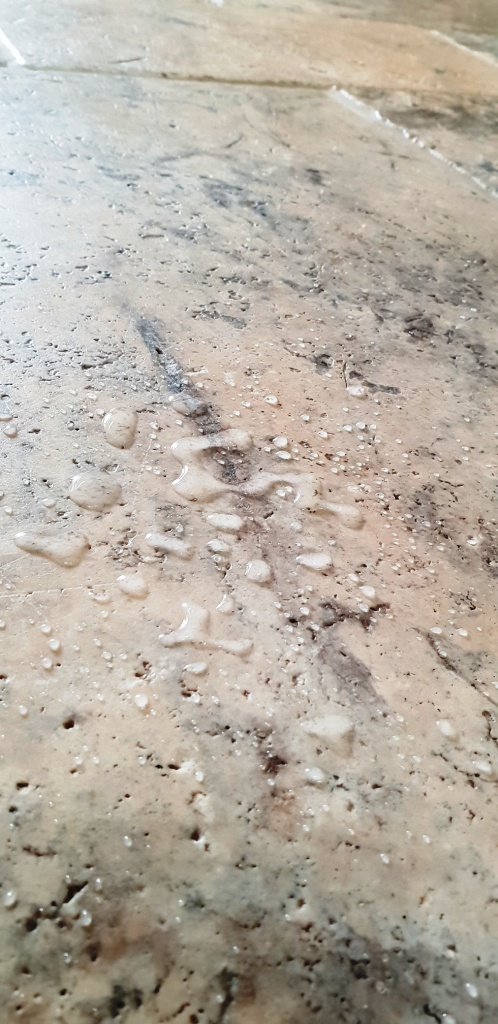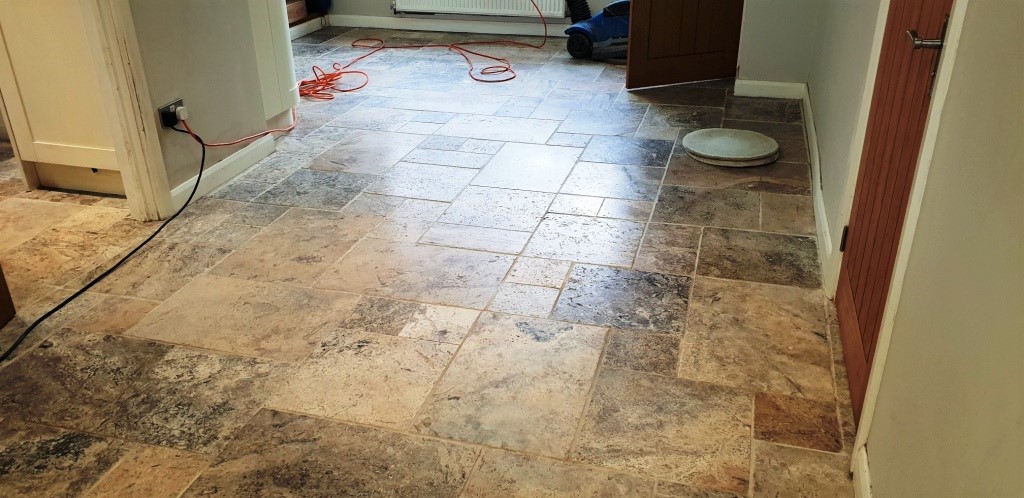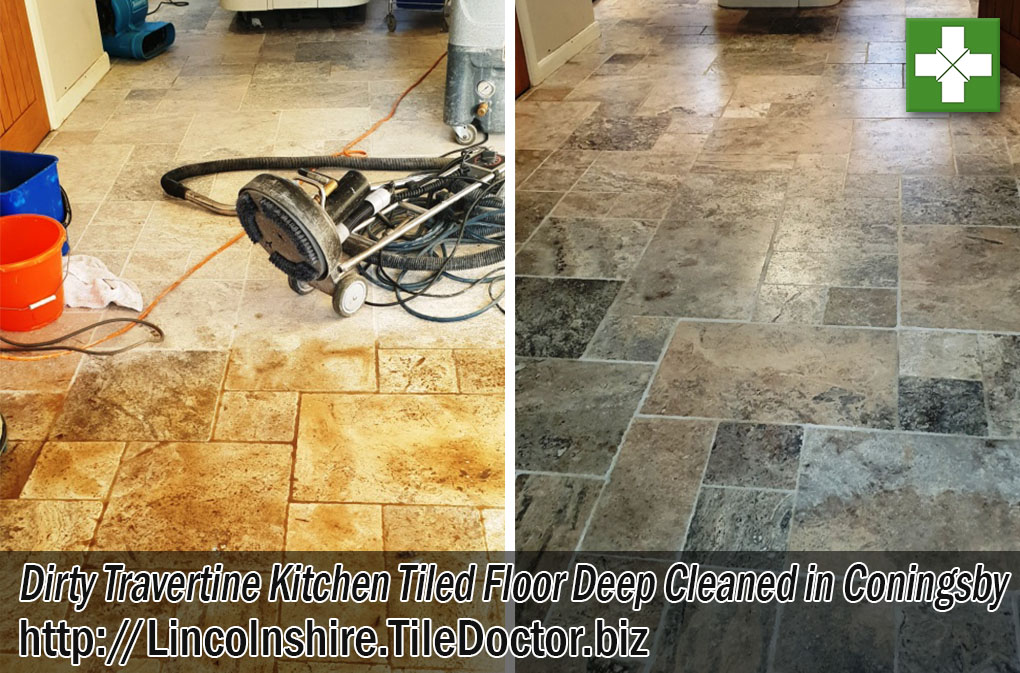A customer from the village of Coningsby was having trouble keeping their Travertine tiled Kitchen floor clean. Another company had sealed the flooring previously, but it clearly hadn’t lasted and dirt had now become ingrained in the pores of the stone. As a result, mopping the floor wasn’t effective at removing the dirt from either the Travertine or the grout lines.
This was a busy work kitchen that needed to have a floor that is easy to maintain; now frustrated with the way the floor looked they considered having it taken up and replaced but decided to contact Tile Doctor first looking for a remedy.
 |
 |
We visited the property to survey the floor and discuss the issues they were facing with the floor. It clearly needed to be deep cleaned and then resealed properly with a more effective product. I explained our process and discussed the result they were looking for. They were happy for me to go ahead and requested a Matt finish rather than a shine or gloss look as it was a high use kitchen.
Cleaning and Burnishing a Travertine Tiled Floor
I returned on the agreed date and spent the first day removing the old sealer that was no longer working and deep cleaning the flooring. To achieve this, I used a series for burnishing pads of different grits. After each pad the floor was rinsed using our Rotovac system which rinses the floor and extracts the dirty water off the floor at high speed. Although an expensive investment the machine makes light work of cleaning hard floors and saves a lot of time.

After cleaning the floor, a turbo dryer was installed to speed up the drying process so the floor can be inspected, and any stubborn areas redone. The tiles looked nice and clean, but I could see some areas of grouting needed more work so these were hand scrubbed with Tile Doctor Pro-Clean followed by another rinse to remove the soil.
 |
 |
At this stage I also noticed a few holes in the travertine that were filled for the customer with a matching colour. This is a common problem for Travertine and unfortunately, they easily attract dirt, so filling makes the floor much easier to clean going forward.
Sealing a Travertine Tiled Floor
We returned the following morning and tested the flooring with a damp meter to make sure it was fully dry. All was well and it was ready to seal with our quality impregnator Tile Doctor Colour Grow which protects the floor from within whilst enhancing the natural colours in the stone in the process. The Travertine proved more absorbent than usual for this type of stone and took three coats before a water test indicated the floor was fully sealed.

You can see from the photo above that the water beaded up on the surface and can be simply wiped away even after a few minutes. This shows maximum protection has been applied. Given my experience with this floor I suspect the previous company had not applied enough sealer and this would explain why it failed, had they conducted a water test then this should have been obvious.
We then gave a final polish with our buffer and a white soft pad to really strengthen the seal and give the best finish. I should mention that Colour Grow leaves a matt finish which matches the customer’s request.
 |
 |
For aftercare cleaning going forward I left the customer a complimentary bottle of Tile Doctor Neutral Tile Cleaner that looks after the seal better than any high alkaline or acidic cleaners like bleach or washing up liquid which will prematurely erode the seal.
The customer was delighted with the results, commenting on how much brighter the whole room looked.



Tile Doctor have the products, equipment and experience to tackle all sorts of stone, tile and grout related problems including full restorations, removing Limescale, repairing cracked tiles and even stain removal with products such as Tile Doctor Reduxa which can lift Red Wine stains out of natural stone.